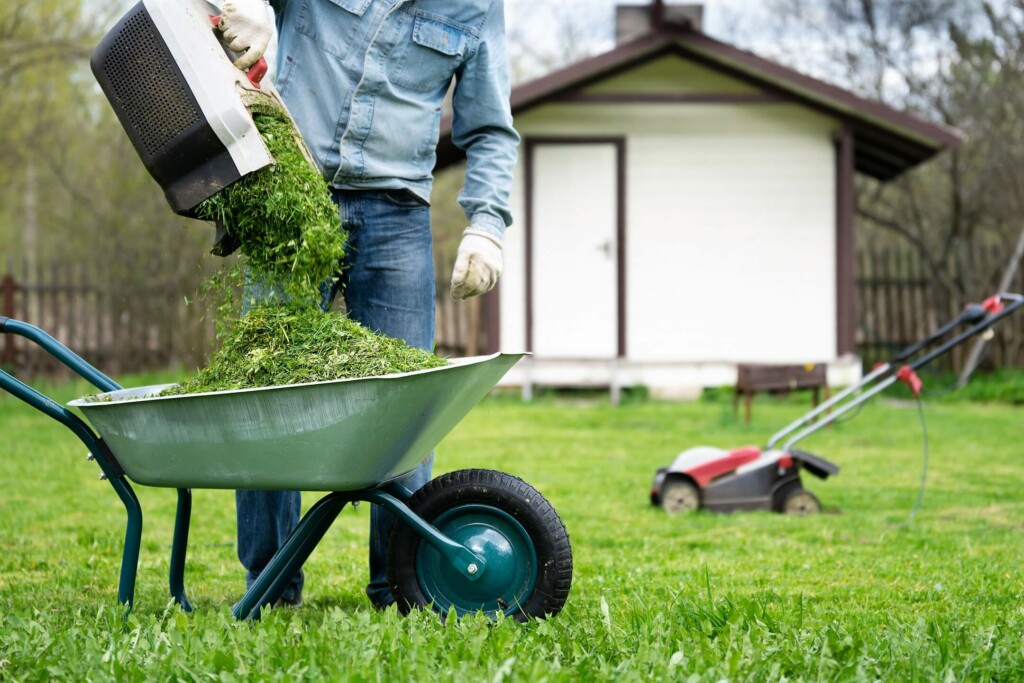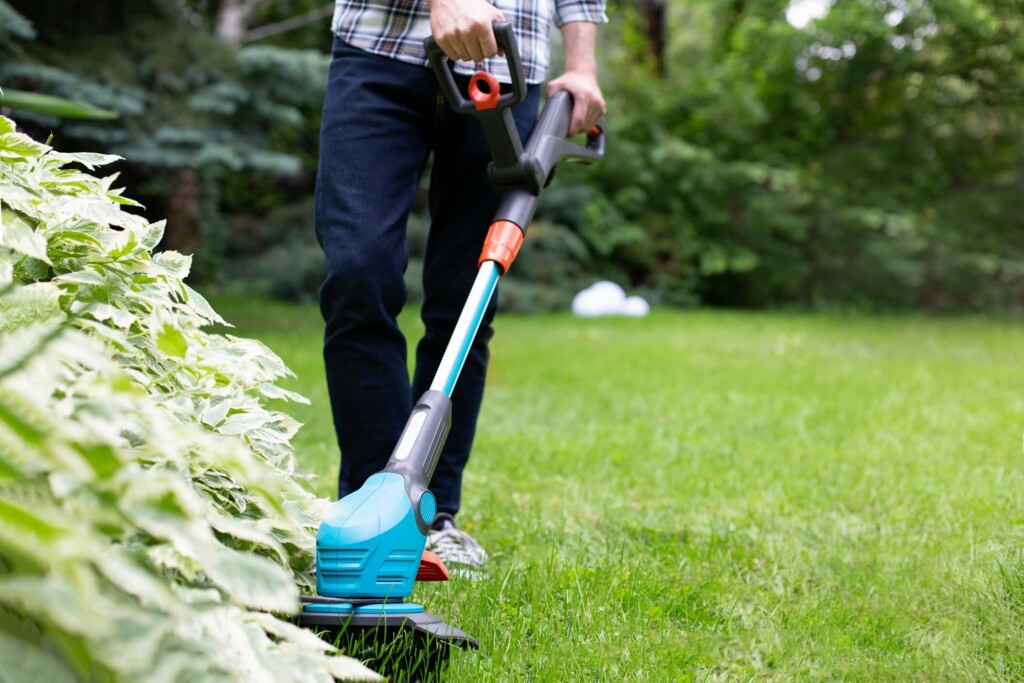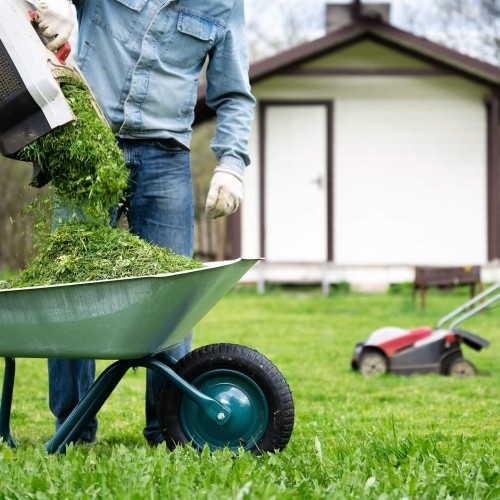A beautiful lawn requires lots of care, time, and maintenance. Here are a few guidelines to help ensure your grass is greener than your neighbour’s.

Mowing your lawn properly
Regular mowing promotes a healthy lawn that tolerates hot and dry weather and resists pests and disease.
Proper mowing height
Did you know that your mower height should vary with the season? When it’s hot, keep your grass at least eight centimetres tall so the soil stays moist and cool. You won’t need to water it as often, and the roots won’t dry out as temperatures soar.
In spring and fall, shoot for a height of around five centimetres. Trimming your lawn once warmer weather arrives will stimulate growth, and at the end of the season, keeping the grass at this length will prevent disease.
Regardless of the time of year, you should never cut your grass by more than a third of its length. It’s better to cut less, but more often! Besides, cutting your lawn too short lays bare all of its little imperfections. Aim to mow it once a week in spring and fall, and every 10 days in summer.
When to mow your lawn
To avoid an uneven cut, it’s recommended not to mow grass while it’s wet. Plus, wet soil tends to become more compact. Late afternoon and early evening are therefore the best times to get out the mower—assuming, of course, that it hasn’t rained in the past few days and that the air isn’t too humid. Furthermore, as you now know, longer grass protects the roots from drying out and helps keep the soil at ideal moisture levels, which makes it important to properly manage your lawn during heat waves and dry spells.
Mind your noise
Noise regulations differ from one municipality to another. Make sure you’re aware of the laws in your area to avoid problems with the authorities or your neighbours.
Grasscycling
Grasscycling is an ecological and economical technique in which grass clippings are left in place to prevent weed growth and provide nutrients as they decompose. Be sure to evenly spread no more than one-half centimetre of clippings over your lawn to avoid suffocating the grass.

Sharpen your mower blades
Do you sharpen your mower blades at the start of each season? A clean cut will promote regrowth and lower the risk of disease.
Watering your lawn
A poorly watered lawn will stop growing and enter a dormant state. During dry periods, it’ll turn brown or yellow until irrigated again, perhaps during a bout of rain. While your grass will return to its former glory, a well-maintained lawn is still less vulnerable to disease and pests.
Watering frequency
To prevent the proliferation of surface roots, it’s better to water your lawn deeply, though not too often. Avoid light, frequent watering. That said, be aware that too much water can also affect lawn growth and health.
Ideally, begin watering when summer starts in late June, once per week when it doesn’t rain, and more often during periods of very hot weather.
How much water your lawn needs depends on the type of soil you have. For instance, sandy soil will dry out more quickly than clay soil. Nevertheless, lawns generally need two and a half centimetres of water at a time. To measure this, try placing several small containers in various locations and stop watering once they are full, most likely after one to two hours. Note that grass growing near trees may need more water, as tree roots tend to be thirstier.
When to water
To reduce evaporation caused by heat and wind, morning is undoubtedly the best time to water your lawn. If watering early in the day is impossible, wait until early evening, but make sure your grass has time to dry before nightfall to keep fungal diseases at bay.
As with noise, find out about any watering regulations in your municipality.
Aerating the soil
Mowing, watering, and walking on grass tend to compact the soil, eventually depriving the roots of air. Over time, growth slows, and the blades dry out.
If this occurs, it’s strongly recommended to aerate the soil once a year, preferably in spring. The loosened soil will then absorb water and nutrients more easily and allow roots to penetrate deeper.
Don’t hesitate to ask the experts at your gardening centre for advice about the technique that best suits your soil type.
The benefits of fertilizing
Just like gardens, trees, bushes, and other plants, grass also needs nutrients for healthy growth and development. A fertilized lawn will also be less vulnerable to insects and disease.
Grasscycling and top dressing with compost are good ways to give your lawn the nitrogen it needs. Regular watering will then help nutrients penetrate the soil.
Applying a fertilizer adapted to the season can also keep your lawn strong and healthy all year! Don’t forget to inspect your grass regularly to quickly spot any problems.
Key takeaways
- Regular mowing keeps lawns healthy.
- It’s recommended to water your grass deeply, but less often.
- Aerating your soil every spring encourages deep root growth.
- Fertilized lawns are less vulnerable to insects and disease.

